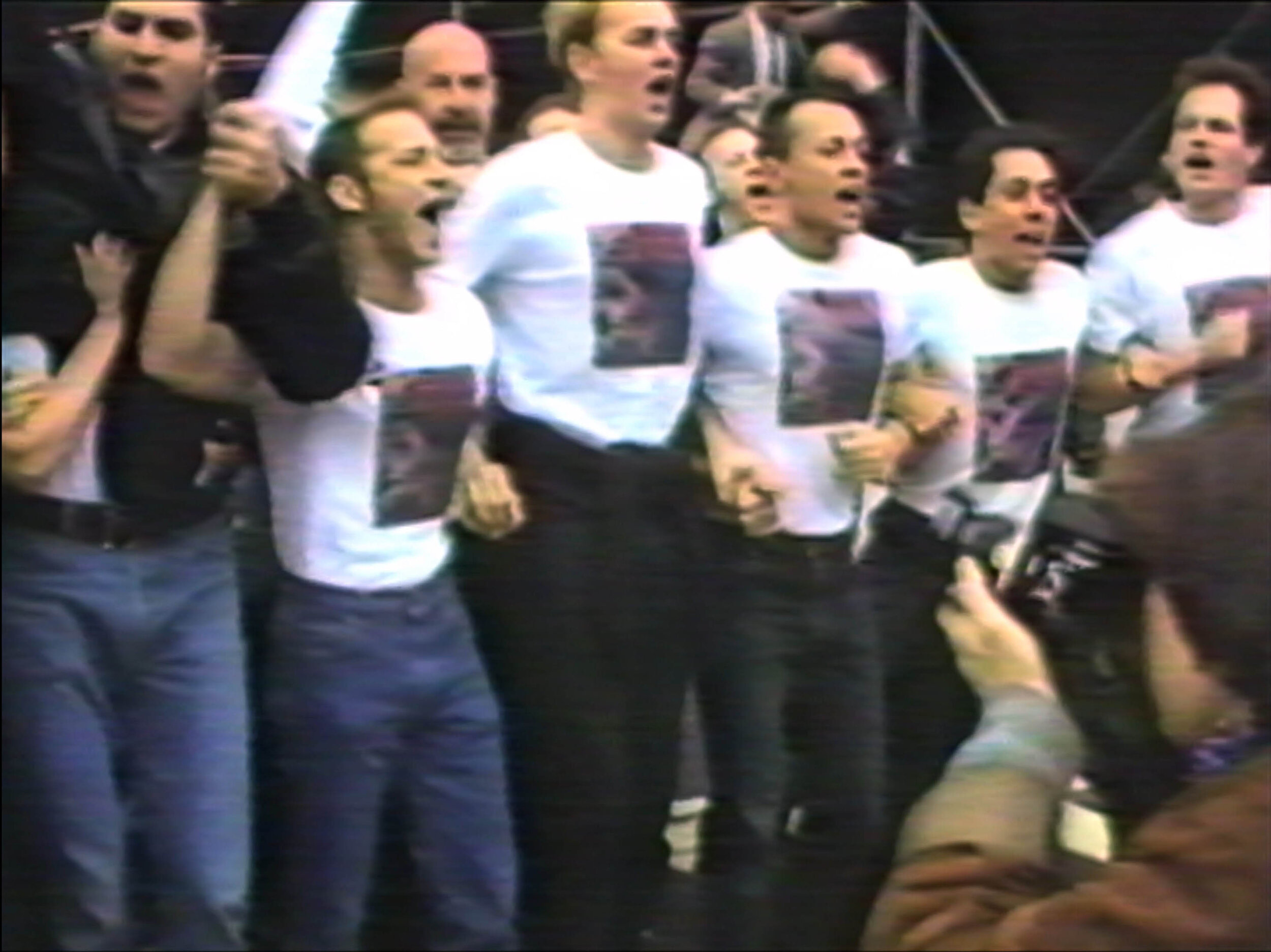
UNITED IN ANGER: A HISTORY OF ACT UP STUDY GUIDE
UNIT 1: DISCUSSION GUIDE
Discussion Section 1: Documentary Film
1. Define “documentary film” and compare it to “narrative film.” For help, visit the Elements of Cinema website.
2. Why do you think the director, Jim Hubbard, chose to make a documentary film rather than a narrative film? How might documentaries and narrative films each be able to historicize differently?
3. In what way does the editing (the pacing, the duration, the way shots are placed together) replicate the experience of being inside the AIDS crisis? How does this compare to more conventional documentaries in terms of the editing, that is to say the feel, pacing and timing of how the story unfolds?
Discussion Section 2: Oral Histories and Archival Footage
United in Anger tells the history of ACT UP in two primary ways: through oral histories (or interviews) with ACT UP members and using archival footage of activist demonstrations.
1. Define “oral history” and “archival footage” as you understand them from the film.
2. Describe the oral histories (interviews) in the film. What/who do you see? What is happening? What words do you hear frequently? How would you describe the people being interviewed? What effects do the interviews have on you as a viewer? Most of the interviews were conducted by the same person. What is the relationship between the people being interviewed and the person asking the questions?
Clip #1
3. Describe the archival footage. What do you see and hear? Where is the footage shot? What is happening in the videos? How were the videos originally made and by whom? What effects does the footage have on the viewer? How does the style of video contrast with the ways video looks today?
Clip # 2
Clip #3
Clip #4
4. How are the interviews and the video footage similar and different in terms of how they remember ACT UP and “narrate” the film? Do you think the interviews and the archival footage tell the same story about AIDS activism or different stories?
5. In the film, director Jim Hubbard juxtaposes contemporary interviews, conducted 20-30 years after the fact, with archival footage of the same person when they were in ACT UP. What does this comparison reveal to you? Which of these juxtapositions is the most memorable?
6. Why do you think Hubbard, like other AIDS video activists, chose not to use a narrator in his film, instead relying primarily on oral histories and archival footage? Why did he include no professional commentators, such as doctors, professors, or paid scientists? How does this decision affect your sense of history?
Discussion Section 3: The Audience
This section asks you to think about the relationship that various audiences (including you) might have to United in Anger.
1. What is your relationship to the film? Where are you watching it and why?
2. What did you know about AIDS, AIDS activism and ACT UP before watching the film, and how did that knowledge or lack of knowledge influence how you received the film?
3. Who do you think the intended audience is for the film. Why?
4. If you watched this film in a class, how does it compare to other texts in your course? If you are familiar with other documentaries or AIDS narratives, how does the film compare to those?
5. To whom would you recommend United in Anger and why?
STUDY GUIDE HOME
UNIT 1: HISTORICIZING ACT UP
UNIT 1: PROJECTS AND EXERCISES
UNIT 2: THE STRUCTURE OF ACT UP
UNIT 2: PROJECTS AND EXERCISES
UNIT 3: ACT UP IN THE STREETS
UNIT 3: PROJECTS AND EXERCISES
UNIT 4: THE POLITICS OF HIV/AIDS MEDICINE
UNIT 4: PROJECTS AND EXERCISES
UNIT 5: ACTIVIST ART
UNIT 5: PROJECTS AND EXERCISES